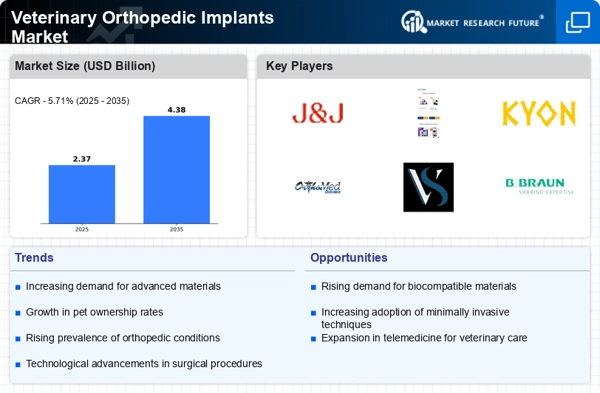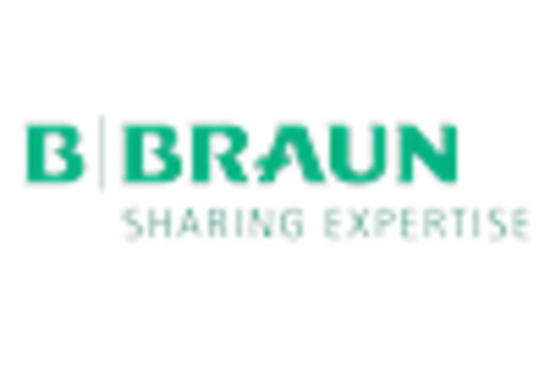Growing Awareness of Animal Welfare
The Veterinary Orthopedic Implants Market is also influenced by the growing awareness of animal welfare among pet owners and society at large. As public consciousness regarding the health and well-being of animals increases, there is a corresponding rise in the demand for advanced veterinary care, including orthopedic treatments. Pet owners are now more informed about the options available for their pets, leading to a greater willingness to invest in high-quality orthopedic implants. This shift in consumer behavior is likely to drive market growth, as more individuals seek out specialized veterinary services to ensure the best possible outcomes for their pets.
Minimally Invasive Surgical Techniques
The Veterinary Orthopedic Implants Market is witnessing a shift towards minimally invasive surgical techniques, which are becoming increasingly popular among veterinarians. These techniques offer numerous advantages, including reduced recovery times, less postoperative pain, and lower risk of complications. As veterinary professionals adopt these methods, the demand for specialized orthopedic implants designed for minimally invasive procedures is likely to rise. This shift not only enhances the quality of care provided to animals but also aligns with the growing expectations of pet owners for effective and less traumatic treatment options. The market is expected to respond positively to this trend, with a projected increase in sales of implants designed for such techniques.
Rising Pet Ownership and Veterinary Care
The Veterinary Orthopedic Implants Market is significantly influenced by the increasing trend of pet ownership. As more households adopt pets, the demand for veterinary services, including orthopedic care, escalates. According to recent statistics, pet ownership rates have risen by over 20% in the last decade, leading to a corresponding increase in the need for specialized veterinary care. This trend is particularly pronounced in urban areas, where pet owners are more likely to seek advanced medical treatments for their animals. Consequently, the growing pet population is expected to propel the demand for orthopedic implants, contributing to the overall expansion of the market.
Increased Investment in Veterinary Healthcare
The Veterinary Orthopedic Implants Market is benefiting from increased investment in veterinary healthcare, which is becoming a priority for many governments and private entities. This investment is aimed at improving animal health standards and expanding access to advanced medical technologies. As funding for veterinary research and development grows, the market for orthopedic implants is likely to expand, driven by the introduction of innovative products and improved treatment protocols. Furthermore, educational initiatives aimed at veterinary professionals are enhancing their skills in orthopedic surgery, thereby increasing the demand for high-quality implants. This trend suggests a robust future for the Veterinary Orthopedic Implants Market.
Technological Advancements in Veterinary Orthopedic Implants
The Veterinary Orthopedic Implants Market is experiencing a surge in technological advancements that enhance the efficacy and safety of surgical procedures. Innovations such as 3D printing and bioresorbable materials are revolutionizing the design and application of implants. These technologies allow for customized solutions tailored to the specific anatomical needs of various animal species. Furthermore, the integration of advanced imaging techniques, such as MRI and CT scans, facilitates precise pre-surgical planning, thereby improving surgical outcomes. As a result, the market is projected to grow at a compound annual growth rate (CAGR) of approximately 8% over the next five years, driven by these technological innovations.


















Leave a Comment